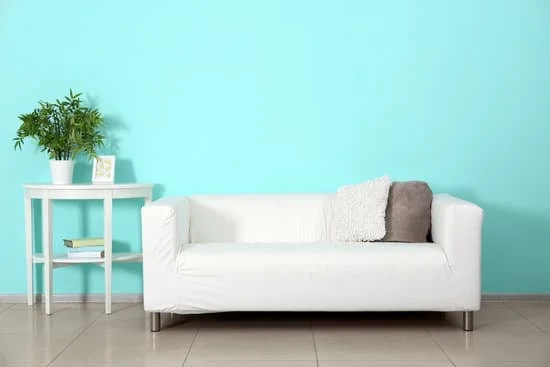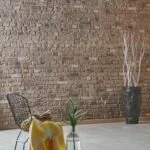Are you looking to give your iPhone iOS 14 home screen a personalized touch? In this article, we will explore the latest trend of customizing home screens on the iPhone and provide you with a comprehensive guide on how to decorate your home screen on iOS 14. With the introduction of iOS 14, Apple has introduced exciting new features that allow users to personalize their devices like never before.
From widgets and app library to custom app icons and aesthetic wallpapers, the possibilities for customization are endless. Whether you’re interested in creating a cohesive theme or just want to add a personal touch, we’ve got you covered.
The release of iOS 14 has ushered in a new era of personalization for iPhone users. With an array of customization options at your fingertips, it’s now easier than ever to transform your home screen into a reflection of your unique style and personality. This growing trend of customizing home screens has sparked creativity among iPhone users worldwide, as they seek to curate visually stunning and functional displays that go beyond the standard grid of app icons.
In this blog post, we’ll take a deep dive into the various ways you can customize your home screen on iOS 14. From choosing a cohesive theme that ties everything together to organizing apps, customizing widgets, personalizing icons, and creating aesthetic wallpapers – we’ll cover it all.
Whether you’re a seasoned pro or just getting started with customizing your home screen, there’s something here for everyone. So let’s delve into the world of iPhone customization and unleash our creativity.
Understanding iOS 14
With the release of iOS 14, Apple introduced a variety of new features that allow users to personalize and customize their home screens like never before. One of the most notable additions is the ability to add widgets to the home screen, providing at-a-glance information and quick access to important apps. These widgets come in various sizes and can be stacked on top of each other, allowing for a high degree of customization.
In addition to widgets, iOS 14 also introduced the App Library, a feature that automatically organizes apps into categories, making it easier for users to find and access their favorite applications. This declutters the home screen, providing a more streamlined and organized look.
Furthermore, iOS 14 offers themes such as light mode and dark mode which helps in personalizing the iPhone in your own unique way. All these new features significantly enhance the customization options available on iPhone iOS 14, allowing users to create visually stunning and personalized home screens that reflect their individual style and preferences.
Overall, understanding the key features and customization options available on iOS 14 is essential for anyone looking to decorate their home screen. By familiarizing oneself with widgets, app library, themes, and other customization tools offered by iOS 14, users can unleash their creativity and transform their iPhone into a personalized and aesthetically pleasing device.
| iOS 14 Features | Customization Options |
|---|---|
| Widgets | At-a-glance information |
| App Library | Automatically organizes apps |
| Themes | Light mode & dark mode |
Choosing a Theme
When it comes to customizing the home screen on iPhone iOS 14, choosing a theme is an essential step in creating a cohesive and visually appealing look. Whether you prefer a minimalist color scheme, a specific aesthetic, or an interest-based theme, selecting a unifying concept will tie together all the elements of your home screen. A well-chosen theme will not only reflect your personal style but also make navigating your apps and widgets more intuitive.
Importance of Cohesive Theme
A cohesive theme for your home screen serves as the foundation for the overall look and feel of your iPhone. It provides visual consistency that can elevate the user experience and make interacting with your phone more enjoyable. In addition, a themed home screen can convey a sense of personalization and creativity that reflects your unique personality and preferences.
Color-Based Themes
One popular approach to choosing a theme for the home screen involves selecting colors that resonate with you. Whether it’s a monochromatic color scheme or a combination of complementary hues, incorporating color into app icons, widgets, and wallpapers can create a striking visual impact on your iPhone’s interface. You can choose to go for bold, vibrant colors for a dynamic look or opt for soft pastel shades for a soothing aesthetic.
Aesthetic and Interest-Based Themes
Another option for choosing a theme is to focus on a particular aesthetic or interest that resonates with you. This could be anything from vintage-inspired designs to nature-themed visuals or even pop culture references. By curating app icons, widgets, wallpapers, and fonts that align with your chosen aesthetic or interest, you can transform your home screen into a personalized showcase of your favorite style or passion.
Organizing Apps
In addition to using the App Library, you can create custom app folders to further organize and group similar apps together. For example, you can create a “Social Media” folder and place all social media apps such as Instagram, Twitter, and Facebook within it. This creates a more streamlined home screen and makes it easier to locate specific apps when needed.
Prioritizing frequently used apps is another important aspect of organizing your home screen. By placing these apps in easily accessible locations such as the first page or dock, you can reduce the time spent searching for them. This also helps to improve efficiency when navigating through your device.
Overall, taking advantage of app organization features in iOS 14 can help you create a clean and efficient home screen that reflects your personal preferences and usage habits.
| iPhone Organizing Apps Tips | Data |
|---|---|
| App Library | Automatically organizes all apps into categories |
| Custom App Folders | Create folders to group similar apps together |
| Prioritizing Frequently Used Apps | Place frequently used apps in easily accessible locations |
Customizing Widgets
Widgets have become an integral part of personalizing iPhone iOS 14 home screens. These dynamic, customizable tools offer a quick glance at the information you need without having to open the respective apps. With iOS 14, Apple has introduced a wide range of widget options that can be tailored to suit individual preferences. In this section, we will delve into the various ways to customize and add widgets to your home screen.
Choosing the Right Widget Size
When customizing widgets for your iPhone home screen, it’s essential to select the right size that fits seamlessly with your layout and design. iOS 14 offers three different widget sizes – small, medium, and large – each catering to specific display needs. Small widgets are perfect for compact overviews like weather or calendar events; medium-sized widgets provide additional details for tasks or reminders; while large widgets are ideal for visual-focused content such as photos or videos.
Stacking Widgets for Efficiency
A new feature brought by iOS 14 is widget stacking, allowing users to stack multiple widgets of the same size on top of each other. This feature comes in handy when space is limited on your home screen but still want easy access to multiple pieces of information. To create a stacked widget, tap and hold on a widget until it enters “jiggle mode,” then drag one widget on top of another of the same size.
Utilizing Third-Party Widget Apps
While Apple provides an array of built-in widgets with iOS 14, third-party developers have also jumped on board by creating their own set of widgets that cater to various interests and needs. By exploring the App Store for third-party widget apps, users can find unique and specialized widgets not offered by Apple’s selection.
These can range from personalized clocks or calendars to fitness trackers or news updates. Install these third-party apps and easily add their corresponding widgets to your home screen just like you would with built-in ones.
By grasping these aspects of widget customization on iPhone iOS 14, you’ll be able to tailor your home screen setup according to your preferences and needs effectively while enhancing both functionality and aesthetics.
Personalizing Icons
When it comes to customizing your iPhone iOS 14 home screen, personalizing app icons is a great way to add a unique touch to your device. There are several methods you can use to personalize your app icons, allowing you to create a cohesive and visually appealing home screen.
Here are some popular methods for personalizing app icons on iPhone iOS 14:
– **Using iOS Shortcuts:** With the introduction of iOS 14, Apple included the ability to create custom app icons using the Shortcuts app. By creating a shortcut for each app you want to customize, you can then assign a personalized icon to it. This allows you to select an image from your photo library or choose from the available icon options.
– **Downloading Custom Icon Packs:** Another popular method for personalizing app icons is by downloading custom icon packs from the App Store or third-party websites. These icon packs often include a variety of themed icons that can be easily applied to your apps using the Shortcuts app.
– **Creating Your Own Icons:** For those who are artistically inclined, creating your own icons is a fun and creative way to personalize your home screen. You can use design software or even simple drawing apps to create custom icons that match your chosen theme or aesthetic.
By utilizing these methods, you can take full control of the visual appearance of your home screen, ensuring that every aspect reflects your personal style and taste. Whether you opt for ready-made custom icon packs or decide to unleash your creativity by designing your own icons, personalizing app icons on iPhone iOS 14 allows for endless possibilities in achieving a completely unique and personalized look.
Creating Aesthetic Wallpapers
As part of the trend of customizing home screens on iPhone iOS 14, creating aesthetic wallpapers plays a crucial role in achieving a cohesive and visually appealing look. Aesthetic wallpapers are an essential element in complementing the overall theme of the home screen and tying everything together. Here are some step-by-step instructions on how to find and create aesthetic wallpapers for your iPhone iOS 14 home screen:
1. Find Inspirations: Start by gathering inspiration for your aesthetic wallpaper. You can browse through social media platforms such as Pinterest, Instagram, or Tumblr for aesthetically pleasing images that resonate with your chosen theme. Consider elements like colors, patterns, textures, and nature scenes that align with your desired aesthetic.
2. Create Custom Wallpapers: If you want to take it a step further, consider creating custom wallpapers that perfectly fit your home screen theme. You can use photo editing apps or graphic design software to craft personalized wallpapers using your favorite images or designs. Experiment with different compositions, filters, and effects to achieve the desired aesthetic.
3. Utilize Wallpaper Apps: There are also numerous wallpaper apps available on the App Store that offer a wide selection of high-quality aesthetic wallpapers tailored to different styles and preferences. Take advantage of these apps to discover unique and eye-catching wallpapers that will enhance the visual appeal of your home screen.
By following these steps, you can easily find or create aesthetic wallpapers that complement the overall theme of your iPhone iOS 14 home screen and contribute to a cohesive and personalized look. Whether you opt for ready-made wallpapers from apps or decide to unleash your creativity by crafting custom designs, the possibilities for enhancing your home screen aesthetics are endless.
Tips for a Cohesive Look
One of the key elements to achieving a visually appealing home screen on iPhone iOS 14 is ensuring that all the customization and personalization efforts result in a cohesive look. This involves paying attention to details such as using consistent fonts, incorporating negative space, and balancing widgets and app icons. By following these additional tips and tricks, iPhone users can elevate their home screens to a whole new level of aesthetic appeal.
Using consistent fonts throughout the home screen can create a sense of harmony and unity. When selecting widgets or customizing app icons, it’s essential to choose fonts that complement each other and contribute to the overall theme. This could mean using the same font style for widget titles, app labels, or lock screen notifications. By doing so, users can achieve a more polished and professional look for their home screens.
Incorporating negative space is another important aspect of creating a visually appealing home screen. Negative space refers to the empty or blank areas on the screen, which are just as crucial as the elements themselves.
By strategically arranging widgets and app icons with enough spacing between them, users can prevent their home screens from looking cluttered or overwhelming. Negative space also allows for better visual balance and makes it easier for users to locate specific apps or widgets at a glance.
Conclusion
In conclusion, customizing the home screen on iPhone iOS 14 allows users to express their creativity and personal style in a way that was not previously possible. The introduction of widgets, app library, and the ability to personalize icons and wallpapers has opened up a new realm of customization options for iPhone users.
By understanding the features of iOS 14 and following the tips provided in this blog post, readers can create a visually appealing and cohesive home screen that reflects their unique personality and interests.
Choosing a theme for the home screen is an important starting point, as it sets the tone for the overall look and feel. Whether it’s based on color palettes, aesthetic preferences, or favorite hobbies, selecting a theme can help guide decisions when organizing apps, customizing widgets, and personalizing icons. Additionally, implementing tips for creating aesthetic wallpapers and achieving a cohesive look with consistent fonts and negative space will enhance the visual appeal of the home screen.
Ultimately, unleashing creativity in decorating the home screen on iPhone iOS 14 is about taking advantage of all the customization options available and making choices that reflect individual tastes. As technology continues to evolve, users are presented with more opportunities to make their devices unique to them. Embracing these features can lead to a more personalized and enjoyable user experience every time they unlock their iPhone.
Frequently Asked Questions
How Do I Decorate My iPhone 14 Home Screen?
Decorating your iPhone 14 home screen can be a fun and creative process. You can start by choosing a visually appealing wallpaper that reflects your personal style or interests.
Next, you can organize your app icons into themed folders or use widgets to display relevant information at a glance. Customizing app icon designs using third-party apps is another way to add a unique touch to your home screen.
How Do I Arrange My Home Screen on IOS 14?
Arranging your home screen on iOS 14 is relatively easy and allows for a high level of personalization. You can start by long-pressing on the app icons to enter “jiggle mode,” which allows you to move and rearrange the icons as you please.
Creating and customizing app folders can help reduce clutter and make it easier to find specific apps when needed. Additionally, utilizing the new widget feature in iOS 14 allows you to add informational and visually appealing widgets to your home screen for quick access.
How Do I Personalize My iPhone?
Personalizing your iPhone involves more than just customizing the home screen appearance. You have the option to choose a custom wallpaper, set up personalized ringtones and text tones, and create shortcuts for frequently used actions using the Shortcuts app.
Furthermore, adjusting settings such as display brightness, font size, and accessibility options allow for a personalized user experience tailored to your preferences. Additionally, organizing apps into categories or using labels can also help personalize your iPhone’s functionality and aesthetics according to your needs.

I’m thrilled to be your companion on this exciting journey through the world of home decor and design. With a passion for turning houses into homes and a keen eye for the finer details, I’m here to help you transform your living spaces into beautiful, functional, and meaningful havens.





